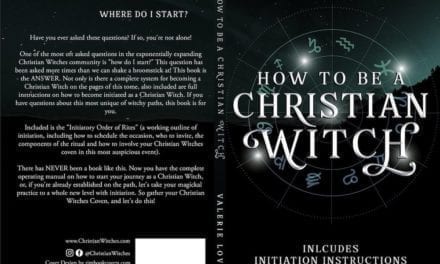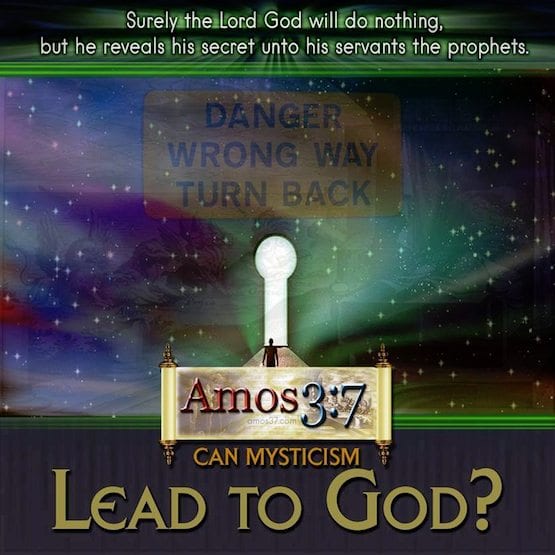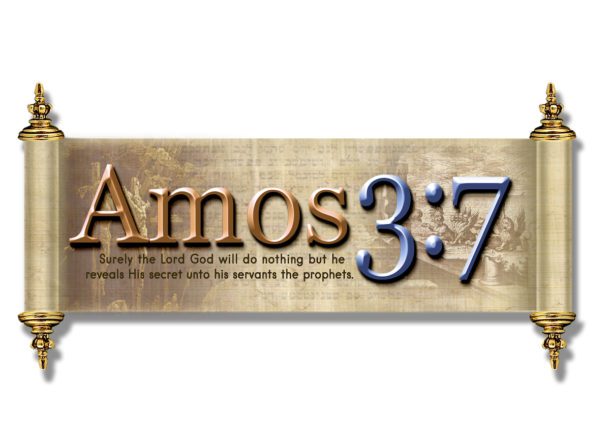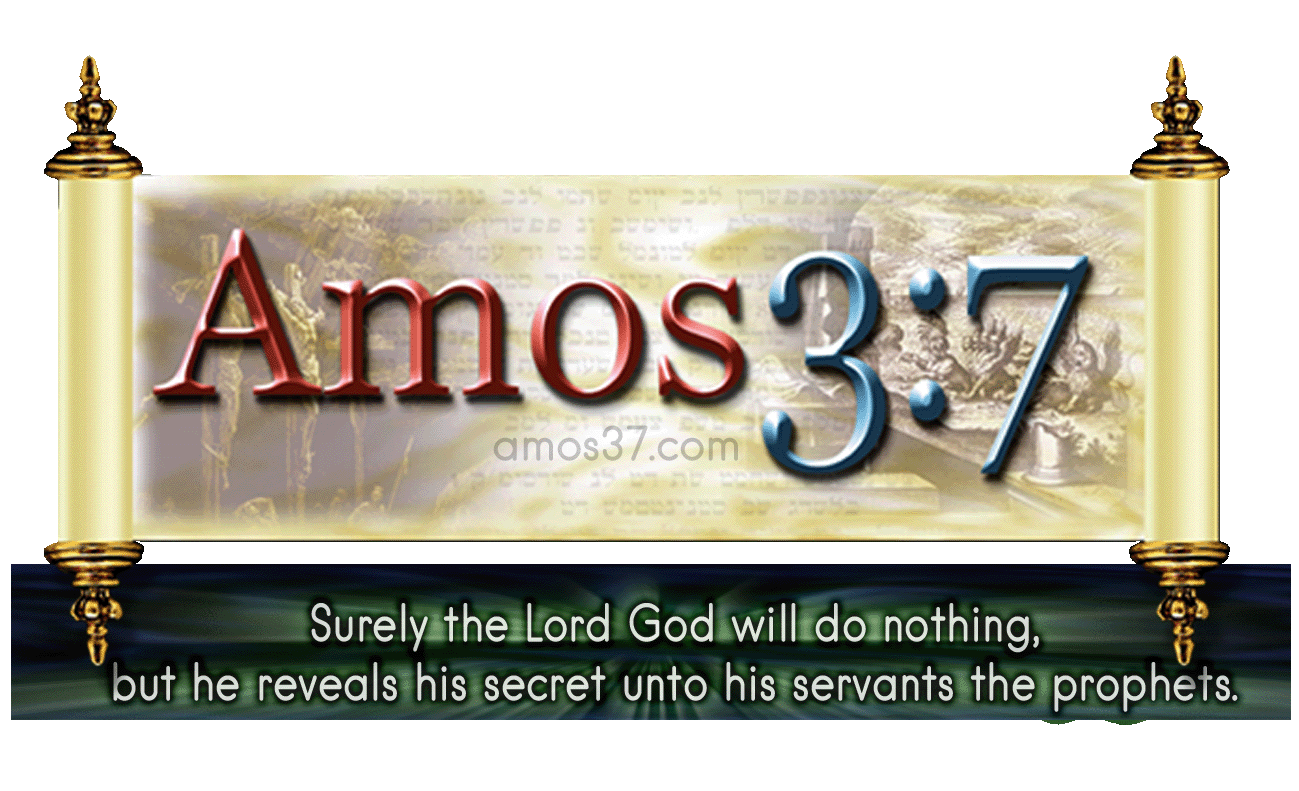![]() Here we are at Easter again and the same questions arise. Is is OK for Christians to celebrate Easter… I don’t want to put anyone under the law, but once you’ve seen the origins of what most of us ignorantly have celebrated all or lives. So what’s the big deal for some. I have attached two articles. The first article is from a Christian source. The second is a pagan gift shop source. They agree on the origins of what I will call “The Icons of Easter”. Well worth looking at God bless you.
Here we are at Easter again and the same questions arise. Is is OK for Christians to celebrate Easter… I don’t want to put anyone under the law, but once you’ve seen the origins of what most of us ignorantly have celebrated all or lives. So what’s the big deal for some. I have attached two articles. The first article is from a Christian source. The second is a pagan gift shop source. They agree on the origins of what I will call “The Icons of Easter”. Well worth looking at God bless you.
Here’s my issue with this and other things that intrude into holidays. One, Easter is not Christian really. What we celebrate is Passover & First Fruits (Resurrection Day). Jesus the lamb of God, suffered, died, and rose again according to God’s perfect plan to redeem fallen mankind to Himself in a series of Events He gave to Moses. They are known as the Feasts of the LORD as outlined in Leviticus 23. They are Gods appointments (Moedim) with man. It is Passover and the ancient Church began to move what they called Easter and distance it from the actual Jewishness of Passover. Sadly most, myself included centuries removed have ignorantly celebrated a Pagan impostor. Oh yeah, the Playboy bunny has it’s origins in the same-sex cult exposed below. Also we have a video of the Passover explained. See also our Hebrew origins on site.
Here is a rule of thumb that may help. If we are celebrating in our Churches Christmas, Easter or whatever does it take away from or add glory to God? What I’m saying is Santa and the Easter bunny take from God’s day. God does not share His glory with anyone! (Isaiah 48:11) If your honest it takes and removes God from His preeminent position. God has no equal and therefore should not asked to be shared with clearly Pagan practices.
Well isn’t Easter in our bible (KJV)… See Dr. Hovind video here on the timing issue mentioned here. It is Nissan 14 not always in April of note.
Consider the following verses. He has called us to be Holy, simply put that means SEPARATE from the world.
Be ye not unequally yoked together with unbelievers: for what fellowship hath righteousness with unrighteousness? and what communion hath light with darkness?
And what concord hath Christ with Belial? or what part hath he that believeth with an infidel?
And what agreement hath the temple of God with idols? for ye are the temple of the living God; as God hath said, I will dwell in them, and walk in [them]; and I will be their God, and they shall be my people.
Wherefore come out from among them, and be ye separate, saith the Lord, and touch not the unclean [thing]; and I will receive you,
And will be a Father unto you, and ye shall be my sons and daughters, saith the Lord Almighty. 2 Corinthians 6
What New Testament truth has the Apostle Paul amplify here.
Verse 6 & 7 Our work among the pagan world is By pureness, by knowledge, by longsuffering, by kindness, by the Holy Ghost, by love unfeigned, By the word of truth, by the power of God, by the armour of righteousness on the right hand and on the left…
If we are too reach the unreachable and be relevant. We are to do it by “THE WORD OF TRUTH, by the power of God. Not by inviting worldly traditions into the Church. That’s not being separate when we have the Easter bunny or Santa in our Churches.
Consider the scriptures teach us that “Now all these things happened to them as examples, and they were written for our admonition, upon whom the ends of the ages have come.” 1 Corinthians 10
קֹדֶשׁ
Holy means: 1) apartness, holiness, sacredness, separateness
a) apartness, sacredness, holiness
1) of God
2) of places
3) of things
b) set-apartness, separateness
Here is a list of where Holy (Kadosh) appears.
Blue Letter Bible – Search Results for NKJV
The first time it appears is when God called to Moses from the burning bush. Exodus 3:5 Then He said, “Do not draw near this place. Take your sandals off your feet, for the place where you stand [is] holy ground.”
You see we are to be kept clean from the pollution of the world. You see this over and over in Gods tabernacle. They are to make all the planks, curtains, furniture, clothing, and tools for Gods use where TO BE ONLY FOR GODS USE. Wow, we need to learn God is Holy separate from sinners. He loves us and He wants us to draw near with a pure heart. Recall the sons of Aaron, whereNadab, and Abihu who offered profane fire in Gods presence.
They shall be holy to their God and not profane the name of their God, for they offer the offerings of the LORD made by fire, [and] the bread of their God; therefore they shall be holy.Leviticus 21 (Blue Letter Bible: NKJV – New King James Version)
Thank God we live in the age of Grace or we would have smoking altars all over the world. They are set forth as examples.
Another incident comes to mind my wife reminded me of. The idea of “The Icons of Easter” is rooted in ancient Babylonian fertility cult and easily traced to today as demonstrated below.
Israel had been tempted and drawn into sinning with the Moabite women with Balaam’s Strategy of getting Israel to join Moab in their fertility cult Numbers 23-25.
In this tough love demonstration, Israel was to kill those who were joined to Baal of Peor and they hung all the offenders. Amazingly enough one from Israel brought one of these women into the sight of Moses and all the people at Church (Tabernacle of Meeting). The response was swift as Phinehas rose up and we see here in Numbers 25.
And indeed, one of the children of Israel came and presented to his brethren a Midianite woman in the sight of Moses and in the sight of all the congregation of the children of Israel, who [were] weeping at the door of the tabernacle of meeting. Now when Phinehas the son of Eleazar, the son of Aaron the priest, saw [it], he rose from among the congregation and took a javelin in his hand; and he went after the man of Israel into the tent and thrust both of them through, the man of Israel, and the woman through her body. So the plague was stopped among the children of Israel. And those who died in the plague were twenty-four thousand.
Wow over twenty four thousand people died over that Pagan fertility cult association with Gods Holy people whom He gave us as an example to be separate. God gave Phinehas a Behold, I give to him My covenant of peace; and it shall be to him and his descendants after him a covenant of an everlasting priesthood, because he was zealous for his God, and made atonement for the children of Israel.’ ”
 Tough to swallow for us on this side of grace. But God is the same today, yesterday and forever. I say thrust Easter bunny and Egg of Estarte and bring peace and blessings to your home and be zealous for the Lord or God and be separate and give the lost the Word of God and not a basket full of candy.
Tough to swallow for us on this side of grace. But God is the same today, yesterday and forever. I say thrust Easter bunny and Egg of Estarte and bring peace and blessings to your home and be zealous for the Lord or God and be separate and give the lost the Word of God and not a basket full of candy.
Of note the Jews on Passover take a piece of Matzah break it into three pieces and hide one and have the kids look for it and are given a reward (treat, or gift) This is a beautiful picture of the death burial and resurrection of the Lord Jesus Christ not a Pagan counterfeit. Read below and take what I say to heart. Do we want to please God or men. As for me and my house we will serve the LORD.
In Christ, Joshua Toupos
What is the origin of Easter?
What is the origin of Easter? – ChristianAnswers.Net
The name “Easter” has its roots in ancient polytheistic religions (paganism). On this, all scholars agree. This name is never used in the original Scriptures, nor is it ever associated biblically with the death and resurrection of Jesus Christ. For these reasons, we prefer to use the term “Resurrection Sunday” rather than “Easter” when referring to the annual Christian remembrance of Christ’s resurrection.
Ancient origin of Easter (Eastre) goddess of Spring
Most reference books say that the name “Easter” derived from the Eastre, the Teutonic goddess of Spring. Although this relationship exists, in reality, the origin of the name and the goddess are far more ancient – going all the way back to the Tower of Babel. The origin begins not long after the biblical Flood.
The Flood was a divine judgment sent on mankind after evil had become all pervasive and all people everywhere were totally unresponsive to God. The Bible says that “the wickedness of man was great in the earth, and that every intent of the thoughts of his heart was only evil continually” (Genesis 6:5, NKJV). It is not difficult to imagine that life must have been almost unbearable at this time in history. God gave humankind a second chance by preserving the righteous man Noah and his family (a total of 8 people).
After the Flood, Noah had a talented, but evil, great-grandson named Nimrod (Genesis 10:6-10) who rebelled greatly against God. The Bible says that he was “a mighty one”[1] Jewish tradition indicates that Nimrod was a tyrant “who made all of the people rebellious against God.”[2] It is evident from history that Nimrod was not only a political leader, but also the lead priest of a form of occultic worship.[3]
King Nimrod, Queen Semiramis (Easter), and Tammuz (the “reincarnated” Nimrod)
 Nimrod built and organized major cities. The Bible notes that these included Babel, Asshur, Nineveh and Calah (Genesis 10:10-12). If you know anything about ancient history, the mention of these places may send shivers up your spine. For these were cities of great, almost unimaginable practices and perversion.
Nimrod built and organized major cities. The Bible notes that these included Babel, Asshur, Nineveh and Calah (Genesis 10:10-12). If you know anything about ancient history, the mention of these places may send shivers up your spine. For these were cities of great, almost unimaginable practices and perversion.
When Nimrod eventually died, the Babylonian mystery religion in which he figured prominently continued on. His wife Queen Semiramis saw to that. Once he was dead, she deified him as the Sun-god. In various cultures he later became known as Baal, the Great Life Giver, the god of fire, Baalim, Bel, Molech, etc.
“Later, when this adulterous and idolatrous woman gave birth to an illegitimate son, she claimed that this son, Tammuz by name, was Nimrod reborn.”[4] Semiramis “claimed that her son was supernaturally conceived [no human father] and that he was the promised seed, the ‘savior’” – promised by God in Genesis 3:15. “However, not only was the child worshipped, but the woman, the MOTHER, was also worshipped as much (or more) than the son!”[5] Nimrod deified as the god of the sun and father of creation. Semiramis became the goddess of the moon, fertility, etc.
“In the old fables of the Mystery cults, their ‘savior’ Tammuz, was worshipped with various rites at the Spring season. According to the legends, after he was slain [killed by a wild boar], he went into the underworld. But through the weeping of his mother… he mystically revived in the springing forth of the vegetation – in Spring! Each year a spring festival dramatically represented this supposed ‘resurrection’ from the underworld.[6]
Thus, a terrible false religion developed with its sun and moon worship, priests, astrology, demonic worship, worship of stars associated with their gods, idolatry, mysterious rites, human sacrifice, and more. Frankly, the practices which went on were so horrible that it is not fitting for me to speak of them here.
Babylon & The Continuing Confusion in Religions
It was at Nimrod’s city of Babel that a towering structure was first built in defiance of God as part of their Satanic religion. Archaeological evidence indicates that this was a spectacular pyramid-shaped structure (ziggurat). The Bible tells us that at this time there was only one language in the world and that most of the world’s population centered in this area and participated in this religion. It was evident to God that all mankind would soon degenerate into a level of evil that would parallel that of the pre-Flood world. For humanity’s sake, something had to be done to slow and frustrate this organization of an evil one world, tyrannical government.
God confused their language, so that they could not understand each other (Genesis 11:7). (This is the ultimate source of the world’s many languages.) As a result, many people moved away from the area in groups according to their particular new language. Most, if not all, of these people carried their evil Sun-God-based religion with them. They continued to worship the stars and practice all the other ungodly rituals of their religion. Some also continued to build pyramids reminiscent of the Tower of Babel as part of this mystery religion. Today, we can still find remnants of these throughout the world (e.g., Iraq, South America, Central America, Egypt, Burma).
Babel was the origin of an idolatrous system that swept the world. The Bible says of her, “Babylon… the nations drank her wine; Therefore the nations are deranged” (Jeremiah 51:7). The Bible often speaks of the Satanic religions which came from her. The ancient Greek historian Herodotus “witnessed the Mystery religion and its rites in numerous countries and mentions how Babylon was the primeval source from which ALL systems of idolatry flowed.[7] Austen Layard said “that we have the united testimony of sacred and profane history that idolatry originated in the area of Babylonia – the most ancient of religious systems.”[8]
 Basically, almost every vile, profane and idolatrous practice you can think of originated at Babel with Queen Semiramis, the Mother Goddess and Nimrod. As the people scattered from Babel with their different languages, they, of course, used different names for Nimrod (Tammuz) and Semiramis. Some called the Mother Goddess “ISHTAR” (originally pronounced “Easter”).[9] In other lands, she was called Eostre, Astarte, Ostera, and Eastre. Other names for Semiramis, the Mother Goddess include: Wife of Baal, Ashtaroth or Ashtoreth, and Queen of Heaven.[10] The Mother goddess was frequently worshipped as the goddess of fertility – and as a sort of Mother Nature and goddess of Spring and sexual love and birth. She was also worshipped as a mediator between god and man. Sexual orgies and temple prostitutes were often used in her worship and in attempting to gain her favor.
Basically, almost every vile, profane and idolatrous practice you can think of originated at Babel with Queen Semiramis, the Mother Goddess and Nimrod. As the people scattered from Babel with their different languages, they, of course, used different names for Nimrod (Tammuz) and Semiramis. Some called the Mother Goddess “ISHTAR” (originally pronounced “Easter”).[9] In other lands, she was called Eostre, Astarte, Ostera, and Eastre. Other names for Semiramis, the Mother Goddess include: Wife of Baal, Ashtaroth or Ashtoreth, and Queen of Heaven.[10] The Mother goddess was frequently worshipped as the goddess of fertility – and as a sort of Mother Nature and goddess of Spring and sexual love and birth. She was also worshipped as a mediator between god and man. Sexual orgies and temple prostitutes were often used in her worship and in attempting to gain her favor.
The Easter Rabbit or Hare
The rabbit is well known as a sexual symbol of fertility. In various parts of the world, religions which developed from Babel also associate the rabbit with periodicity, both human and lunar (Egypt, China, etc.). As you may remember, the Mother Goddess Semiramis (Easter) is associated with the Moon. In other words, the Easter bunny symbolizes the Mother Goddess. Annual Spring time fertility rituals are associated worship of the Mother Goddess and Tammuz, the reincarnation of her husband Nimrod.
 Origins of The Easter Egg
Origins of The Easter Egg
Most children and families who color or hide Easter eggs as part of their Resurrection Sunday tradition have no knowledge of the origin of these traditions. Easter egg activities have become a part of Western culture. Many would be surprised and even dismayed to learn where the traditions originated.
“The egg was a sacred symbol among the Babylonians. They believed an old fable about an egg of wondrous size which was supposed to have fallen from heaven into the Euphrates River. From this marvelous egg – according to the ancient story – the Goddess Astarte (Easter) [Semiramis], was hatched. And so the egg came to symbolize the Goddess Easter.”[11]
The idea of a mystic egg spread from Babylon to many parts of the world.[12] In Rome, the mystic egg preceded processions in honor of the Mother Goddess Roman. The egg was part of the sacred ceremonies of the Mysteries of Bacchus. The Druids used the egg as their sacred emblem. In Northern Europe, China and Japan the eggs were colored for their sacred festivals.[13]
The egg was also a symbol of fertility; Semiramis (Easter) was the goddess of Fertility. The Easter egg is a symbol of the pagan Mother Goddess, and it even bears one of her names.
Summary and Conclusion
“Easter” is simply one of the names of a woman who mightily deceived the world and whose religion has caused untold suffering and misery.[14] She was clearly an enemy of Christianity, and her son Tammuz was an anti-Christ, a false messiah that ultimately deceived millions.
If you are Christian, it is not difficult to discern the bizarre deception and confusion that Satan has successfully orchestrated. For example, notice the embarrassing irony in these traditions which are practiced innocently by most people. They are repeated year after year, because they have become traditional and their origin is unknown to many.
- On the day commemorating Christ’s resurrection, Americans roll decorated eggs on the White House lawn and pretend the Easter rabbit hid them. The same ritual is practiced at some Christian churches.
- “In Lancashire [England] on Easter eve boys and men have been in the habit of touring the towns and villages as ‘Pace-eggers’ begging for eggs before performing the ‘Pace-Egging’ or Pasch (i.e., Easter) play.”[15]
- In Greece each person in a group bangs his red EASTER EGG [not knowing that it is symbol of the Goddess] against the eggs of all the others present in turn, saying ‘Christ is risen,’ and receives the reply ‘He is risen indeed.'”[16]
The seductive symbols of ancient ungodly religions inspired by Satan have been incorporated into people’s everyday lives, even to this day – continuing to obscure the truth of God .
One might wonder if there is a better way for Christians to celebrate Jesus Christ’s resurrection, the most important of all Christian holy days. In retrospect, it seems obvious that it would have been a better witness to the world if Christians had not attempted to “Christianize” pagan celebrations – adopting the name “Easter” (Ishtar/Semiramis) in remembrance of Christ. Jesus has been obscured by painted eggs and bunnies. Attention has been shifted away from spiritual truth and toward materialism (clothing, products and candies with the wrong symbolism). Stores merchandise the name of Easter (not “Resurrection Sunday”) and sell goods that have nothing to do with Christ’s death and resurrection. Christians naively use symbols and practices that unknowingly perpetuate ancient anti-Christ traditions – symbolic customs followed by the same religious cults that inspired the destruction of great numbers of Christians and Jews. Is the Devil laughing at us?
Many church bodies recognize the problem and make every effort to keep the focus of Resurrection Sunday totally on Jesus Christ and the Good News that He brought.
Pagan Source Below:
Easter : History and Traditions
Goddess Ostara
History of Easter Eggs
History of the Easter Bunny
Goddess Ishtar and the First Resurrection
Easter History : Christian and Pagan Traditions Interwoven
The history of Easter reveals rich associations between the Christian faith and the seemingly unrelated practices of the early pagan religions. Easter history and traditions that we practice today evolved from pagan symbols, from the ancient goddess Ishtar to Easter eggs and the Easter bunny.
Easter, perhaps the most important of the Christian holidays, celebrates the Christ’s resurrection from the dead following his death on Good Friday. . . a rebirth that is commemorated around the vernal equinox, historically a time of pagan celebration that coincides with the arrival of spring and symbolizes the arrival of light and the awakening of life around us.
Ostara, Goddess of Spring and the Dawn (Oestre / Eastre)
Easter is named for a Saxon goddess who was known by the names of Oestre or Eastre, and in Germany by the name of Ostara. She is a goddess of the dawn and the spring, and her name derives from words for dawn, the shining light arising from the east. Our words for the “female hormone” estrogen derives from her name.
Ostara was, of course, a fertility goddess. Bringing in the end of winter, with the days brighter and growing longer after the vernal equinox, Ostara had a passion for new life. Her presence was felt in the flowering of plants and the birth of babies, both animal and human. The rabbit (well known for its propensity for rapid reproduction) was her sacred animal.
Easter eggs and the Easter Bunny both featured in the spring festivals of Ostara, which were initially held during the feasts of the goddess Ishtar | Inanna. Eggs are an obvious symbol of fertility, and the newborn chicks an adorable representation of new growth. Brightly colored eggs, chicks, and bunnies were all used at festival time to express appreciation for Ostara’s gift of abundance.
History of Easter Eggs and Easter Candy
The history of Easter Eggs as a symbol of new life should come as no surprise. The notion that the Earth itself was hatched from an egg was once widespread and appears in creation stories ranging from Asian to Ireland.
Eggs, in ancient times in Northern Europe, were a potent symbol of fertility and often used in rituals to guarantee a woman’s ability to bear children. To this day rural “grannywomen” (lay midwives/healers in the Appalachian mountains) still use eggs to predict, with uncanny accuracy, the sex of an unborn child by watching the rotation of an egg as it is suspended by a string over the abdomen of a pregnant woman.
Dyed eggs are given as gifts in many cultures. Decorated eggs bring with them a wish for the prosperity of the abundance during the coming year.
Folklore suggests that Easter egg hunts arose in Europe during “the Burning Times”, when the rise of Christianity led to the shunning (and persecution) of the followers of the “Old Religion”. Instead of giving the eggs as gifts the adults made a game of hiding them, gathering the children together and encouraging them to find the eggs. Some believe that the authorities seeking to find the “heathens” would follow or bribe the children to reveal where they found the eggs so that the property owner could be brought to justice.
Green Eggs . . .
. . . and Ham???
The meat that is traditionally associated with Easter is ham. Though some might argue that ham is served at Easter since it is a “Christian” meat, (prohibited for others by the religious laws of Judaism and Islam) the origin probably lies in the early practices of the pagans of Northern Europe.
Having slaughtered and preserved the meat of their agricultural animals during the Blood Moon celebrations the previous autumn so they would have food throughout the winter months, they would celebrate the occasion by using up the last of the remaining cured meats.
In anticipation that the arrival of spring with its emerging plants and wildlife would provide them with fresh food in abundance, it was customary for many pagans to begin fasting at the time of the vernal equinox, clearing the “poisons” (and excess weight) produced by the heavier winter meals that had been stored in their bodies over the winter. Some have suggested that the purpose of this fasting may have been to create a sought-after state of “altered consciousness” in time for the spring festivals. One cannot but wonder if this practice of fasting might have been a forerunner of “giving up” foods during the Lenten season.
Chocolate Easter bunnies and eggs, marshmallow chicks in pastel colors, and candy of all sorts . . . these have pagan origins as well! To understand their association with religion we need to examine the meaning of food as a symbol.
The ancient belief that, by eating something we take on its characteristics formed the basis for the earliest “blessings” before meals (a way to honor the life that had been sacrificed so that we as humans could enjoy life) and, presumably, for the more recent Christian sacrament of communion as well.
Shaping candy Easter eggs and bunnies out of candy to celebrate the spring festival was, simply put, a way to celebrate the symbols of the goddess and the season, while laying claim to their strengths (vitality, growth, and fertility) for ourselves.
The Goddess Ostara and the Easter Bunny
Feeling guilty about arriving late one spring, the Goddess Ostara saved the life of a poor bird whose wings had been frozen by the snow. She made him her pet or, as some versions have it, her lover. Filled with compassion for him since he could no longer fly (in some versions, it was because she wished to amuse a group of young children), Ostara turned him into a snow hare and gave him the gift of being able to run with incredible speed so he could protect himself from hunters.
In remembrance of his earlier form as a bird, she also gave him the ability to lay eggs (in all the colors of the rainbow, no less), but only on one day out of each year.
Eventually the hare managed to anger the goddess Ostara, and she cast him into the skies where he would remain as the constellation Lepus (The Hare) forever positioned under the feet of the constellation Orion (the Hunter). He was allowed to return to earth once each year, but only to give away his eggs to the children attending the Ostara festivals that were held each spring. The tradition of the Easter Bunny had begun.
Easter Bunny had begun.
The Hare was sacred in many ancient traditions and was associated with the moon goddesses and the various deities of the hunt. In ancient times eating the Hare was prohibited except at Beltane (Celts) and the festival of Ostara (Anglo-Saxons), when a ritual hare-hunt would take place.
In many cultures rabbits, like eggs, were considered to be potent remedies for fertility problems. The ancient philosopher-physician Pliny the Elder prescribed rabbit meat as a cure for female sterility, and in some cultures the genitals of a hare were carried to avert barrenness.
Medieval Christians considered the hare to bring bad fortune, saying witches changed into rabbits in order to suck the cows dry. It was claimed that a witch could only be killed by a silver crucifix or a bullet when she appeared as a hare.
Given their “mad” leaping and boxing displays during mating season as well as their ability to produce up to 42 offspring each spring, it is understandable that they came to represent lust, sexuality, and excess in general. Medieval Christians considered the hare to be an evil omen, believing that witches changed into rabbits in order to suck the cows dry. It was claimed that a witch could only be killed by a silver crucifix or a bullet when she appeared as a hare.
In later Christian tradition the white Hare, when depicted at the Virgin Mary’s feet, represents triumph over lust or the flesh. The rabbit’s vigilance and speed came to represent the need to flee from sin and temptation and a reminder of the swift passage of life.
And, finally, there is a sweet Christian legend about a young rabbit who, for three days, waited anxiously for his friend, Jesus, to return to the Garden of Gethsemane, not knowing what had become of him. Early on Easter morning, Jesus returned to His favorite garden and was welcomed the little rabbit. That evening when the disciples came into the garden to pray, still unaware of the resurrection, they found a clump of beautiful larkspurs, each blossom bearing the image of a rabbit in its center as a remembrance of the little creature’s hope and faith.
Ishtar, Goddess of Love, and the First Resurrection (also known as Inanna)
Ishtar, goddess of romance, procreation, and war in ancient Babylon, was also worshipped as the Sumerian goddess Inanna. One of the great goddesses, or “mother goddesses”, stories of her descent to the Underworld and the resurrection that follows are contained in the oldest writings that have ever been discovered. . . the Babylonian creation myth Enuma Elish and the story of Gilgamesh. Scholars believed that they were based on the oral mythology of the region and were recorded about 2,100 B.C.E.
The most famous of the myths of Ishtar tell of her descent into the realm of the dead to rescue her young lover, Tammuz, a Vegetation god forced to live half the year in the Underworld. Ishtar approached the gates of the Underworld, which was ruled by her twin sister Eresh-kigel, the goddess of death and infertility. She was refused admission.
Similar to the Greek myths of Demeter and Persephone that came later, during Ishtar’s absence the earth grew barren since all acts of procreation ceased while she was away. Ishtar screamed and ranted that she would break down the gates and release all of the dead to overwhelm the world and compete with the living for the remaining food unless she was allowed to enter and plead her case with her twin.
Needless to say, she won admission. But the guard, following standard protocol, refused to let her pass through the first gate unless she removed her crown. At the next gate, she had to remove her earrings, then her necklace at the next, removing her garments and proud finery until she stood humbled and naked after passing through the seventh (and last) gate.
In one version, she was held captive and died but was brought back to life when her servant sprinkled her with the “water of life”. In the more widely known version of the myth, Ishtar’s request was granted and she regained all of her attire and possessions as she slowly re-emerged through the gates of darkness.
Upon her return, Tammuz and the earth returned to life. Annual celebrations of this “Day of Joy”, were held each year around the time of the vernal equinox. These celebrations became the forerunners of the Ostara festivals that welcomed Oestre and the arrival of spring.
A section on the Goddess Inanna(the Sumerian version of the Goddess Ishtar), her myths and symbols, is included with the myths of the goddesses at this website.
Easter eggs, the Easter Bunny, the dawn that arrives with resurrection of life, and the celebration of spring all serve to remind us of the cycle of rebirth and the need for renewal in our lives. In the history of Easter, Christian and pagan traditions are gracefully interwoven.
Connect with Amos37
Stay up to date with Amos37.com eMail update (Weekly)



















